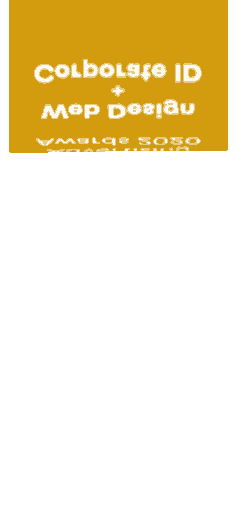

Human After All? The Empathy Economy is Here, According to SXSW 2021
 01 April 2021
01 April 2021
 12min.
12min.
By Alara Orhon, Idea Master Chef & Future Lead
What is SXSW? Established in 1987 in Austin, Texas, SXSW is the world’s largest annual music, film, technology and creative industries festival and conference of its kind. It is the biggest single address for inspiration and insight that I have experienced. In the festival’s own words: “SXSW is where creative minds come together to drive the conversation and engage in creative problem solving around tech, entertainment, and culture. Deep dialogue and interaction between communities can increase their ability to innovate and expand.”
As the definitive destination for discovery at the intersection of technology, culture, society and creative industries, SXSW (South by Southwest) is the place to be to feel the insiders’ pulse of what’s to come. It’s where Twitter was famously born and iconic speakers including web and VR inventors, presidents, musicians, MIT Media Lab leaders, astronauts and poets have delivered astounding keynotes, and Elon Musk hi-jacked a Westworld cast panel. Pre-COVID, the festival and conference had grown into a mammoth melting pot of music, film, tech across almost all industries along with a gaming track and accelerator/incubator program.
SXSW is not for those who want to be served up next year’s top 10 trends (“it’s REALLY the year of mobile this year”, etc.) in a neat 45-minute presentation on pre-defined topics, but rather for those who relish coming to their own conclusions from emerging patterns they notice across whatever schedule they create for themselves drawing from creative, marketing, technology, agriculture, health and science events, that will shape the next 10 years. It is probably the only conference that is so diverse in perspectives that it can hold concurrent talks titled “The End of Content” “What’s Next After Advertising – The Jump to Content” and “Why the Best Content Marketers Use Empathy”. And that’s just the conference part, previously called “SXSW Interactive”.
Some conference years bring a collective sense of crystal clarity, while others document hazy states of mid-transition. For example, in my previous experience, 2012 was all about monetizing curation algorithms, 2015 was clearly the peak of the convergence economy, and since 2018 the conference was grappling with the consequences of advanced AI and the ethics of it. (As a side note - ethics is still a big issue, especially since Microsoft has reportedly patented software to reincarnate people as digital synthetic persons, based on chat histories and social media.)
When the adoption and fast learning curve of AI collided with the cataclysm of 2020 across health, social, cultural and political crises, 2021’s conference outcome seems to find an answer in re-focusing on humanity and humanist approaches to technology for the betterment of all of our ills. While more narrowly focused trendwatchers have been mining the meaning out of the ‘experience economy’, the ‘attention economy’, ‘gig economy’ and ‘creator economy’, on a larger scale, what I want to call “the empathy economy” emerged as the overarching pattern between tech trends, start-ups, media, politics, marketing on the horizon presented by SXSW this year. It brings meaning to where AI can go, where digital should be already, and the key to what social equity and media issues need the most.
In light of the conference, and the context of the marketing and brand community’s soul searching for purpose and profit in the midst of a humanitarian global crisis, here are 5 ways to inspire your thoughts and actions going forward. Hand-picked from over 25 SXSW 2021 sessions, I hope they help you navigate what the empathy economy will bring:
1. Empathy starts with asking the right questions and leaning into uncertainty
Futurist Amy Webb, founder of the Future Tomorrow Institute and one of the most anticipated SXSW speakers each year, wants companies and brands to lean into uncertainty instead of trying to “futureproof”, which she believes is futile. How do we do that? By asking questions. She thinks we spend too much time on people’s answers or existing facts instead of focusing on what kind of questions they are asking. This year there was a 22% increase in the sheer number of unique trends in her presentation launching the 2021 Tech Trends Report, purely due to the digitization-accelerating effects of the pandemic, which she called “New World Disorder”. Her framework on how to lean into these trends and act on them covers three simple questions: “What new tensions do these signals bring?” “What assumptions must hold true for our current strategy to succeed?” and “How can we resolve the tension by using the signals these trends are giving us, even if they are challenging the ideas and beliefs we currently hold?
One of the biggest tensions today according to self-proclaimed humanist technologist, designer and experience guru Dr. John Maeda, who unveiled his annual CX Report is safety (his talk was subtitled ‘Computational Experiences: When Safety Eats the World’, a riff on investor and engineer Marc Andreessen’s 2011 famous phrase “Software is eating the world” in his WSJ Op-Ed) – and this is not just about physical, physiological safety or cybersecurity but psychological and cultural safety. What are you and your brand doing to help people feel safer at those levels?
2. Empathy helps grow business by finding the underserved and ignored
The act of empathy to ask new questions from the consumers’ point of view can lead to new value creation in a seemingly saturated market. Many entrepreneurs think it’s too late to start a new Internet business or create any disruption that does not start with the copycat phrase “Let’s be the Uber of …..”, especially in the hi-tech, hi-VC SaaS (software as a service) spheres. “What specific problems of ordinary people, those not usually ‘invited to the party’, can I solve?”. This was the starting point for Square, which happened to become a very big business by focusing on solving small mom-and-pop businesses’ largely ignored payment problems when they were unable to afford investing in terminals and portals. Square’s co-founder (along with Twitter’s Jack Dorsey), Jim McKelvey, shared his experience in the context of the session “How to Disrupt Billion Dollar Industries”, based on his entrepreneurial methodology laid out in his book “The Innovation Stack”.
Another business that grew focusing quite literally on empathy is Affectiva, which grew out of MIT Media Lab to become the foremost developer of “emotion AI” software. Initially known with the first use of their software to help coach those on the autism spectrum to“read” others’ faces and engage with people better, they now also help brands and companies measure emotional engagement, make products more deeply responsive and make driving safer, all through real-time facial recognition and analysis and deep machine learning. Their founder Rana el Kaliouby, Ph.D., believes that the new winning economy will put value in organizations that practice empathy and leverage technology to fostering human connection. 90% of communication is lost on cyberspace because only 10% of it is based on word choices, while the rest is made up largely of non-verbal cues that don’t always get across. That’s a lot of potential. Currently, Affectiva’s Global Emotion AI database includes 53,000 ads and 10 million consumer responses from 90 countries. There is yet hope that technology can bring us closer to understanding and serving people rather than creating more distance.
3. Empathy requires a look at the culture, not just the individual
Traditionally, in our line of brand and marketing work, the hard yet rewarding act of insight mining is rooted in the psychology discipline, where the individual’s needs, frustrations, dreams, desires, fears and barriers are addressed. We ask the ‘why’s and ‘where’ and ‘how’ in their personal consumption context. Cultural anthropology, on the other hand, focuses on the culture of meaning and symbols – asking “What is …” in the social context. Anthropology in marketing is not new, but it is far beyond ethnographic research and is shaping UX strategy for many companies. On a panel titled ‘Anthropology as a Crucial Frame for Change’, which ran under the theme “A New Urgency”, leading business anthropologists working in advertising, marketing, UX, technology and consumer research explored how to use anthropology to overcome the collective crises we are facing to advance a more sustainable and equitable future. In an increasingly hyperconnected world it makes sense to focus on the context and meaning of symbols of things for people and communities, instead of the usage behavior and attitudes towards the thing by individual consumers, to help re-frame where we can create new value. Likewise, Dr. John Maeda’s annual CX report noted a serious shift from user-centric design to community-minded design.
So, if we were to ask, in the anthropology framework, “what is culture, what is community” to today’s Gen Z and the upcoming Gen Alpha, they would probably say something that symbolizes creativity, freedom and self-expression as well as credibility, authenticity, and anxiety around clout-chasing. Growing up with digital creators as role models and seeing the power of community to enact change, one of the most exciting potentials to shape the culture is to give them the tools. If the dark side of synthetic media and AI are deep fakes, money-laundering NFT schemes and clout-chasing, the empathy-driven solution is coming through tools that support 3D creativity and AI for all. Automation does not need to mean the end of autonomy.
New generation creator platforms, mentioned by Signal and Cipher’s Ian Beacraft, such as Womp (currently taking sign-ups to help anyone create virtual art), Open AI, PIFuHD (easy conversion by anyone of 2D images to 3D renders) are all removing technical skill as a barrier to imaginative creativity and self-expression. As Dr Kai Fu Lee, renowned AI expert and leader of Chinese VC firm Sinovation Ventures, put it in a session on “AI and the Post-Work World”, the meaning of work and self-worth for these generations, culturally and socially, will be all about human jobs that require high creativity as well as high compassion. He expects that AI is not to be feared if we re-focus education and training on time, in fact, that it will help the new flowering of a creative era, where algorithms will create new wealth to fund the flexibility to follow passions, liberate from routine tasks and give youth the power of a creative renaissance.
4. Empathy demands respect for the whole person, including their data
With what Amy Webb calls the “You of Things” becoming the norm, our various devices are now tracking and quantifying all of our productivity, leisure and well-being activities. Connectivity is expected. And it is also a growing burden. During a beauty tech session, Shiseido’s Global Chief Digital Officer Angelica Munson stated that simply being connected at all touchpoints on a user or consumers’ journey is not enough. Marketers need to recognize the user’s intelligence to connect the dots and respect the data they are giving and their time. At the very least, this means not making them repeat a complaint or need they’ve already stated on Twitter again on your app, website or chat line. If you are ingesting their data from all points, they expect that whatever part of your brand they interface with should be up to date with their interactions at all times. Tomorrow, they will expect you to be respectful guardians in a world that will be overtaken by synthetic media and avatars where data ownership will be much disputed. More companies will be held accountable by users, consumers and new regulations for the data they hold and act on. It is also likely that the backlash to the currently increased level of digital surveillance, which seemed to be more acceptable to help with crises such as COVID and the U.S. Capitol insurrection, will be quite strong, and so will de-platforming for many users to protect their privacy and unintended consequences. So, respect consumers by respecting their data – to collect only what is needed, what is purposeful and make smart, empathy-driven services that elevate experiences for them.
5. Empathy means being a responsible storyteller
“You can not be against human trafficking and be for the data trafficking of humans.” This sentence was spoken ever so eloquently yet resoundingly as a wake-up call to brands by Baratunde Thurston, known as a journalist, talk show host, Harvard alumnus, Fast Company columnist, advisor to the Obama White House, fellow at MIT Media Lab to name a few of his activities, during his presentation “For Brands Who Want to Help Us Be Free”. After the culmination of dizzying digitalization, data harvesting and detrimental discord between echo chambers, it is clear that we are at the breaking point where doing the right thing must come first. We now live in a world that is a mediated reality through screens, influence and algorithms. So much of the unrest of the past couple of years has stemmed from the wrong, or untruthful, stories getting out of hand or into the wrong hands.
As advertising and brand people we have a responsibility in the stories we craft, tell, and how we make people feel. We are in a post-truth and post-purpose-statement set of circumstances where we need to act with intent. With digital and a potential for more humanist technology, we have a chance to write a new story that can generate multiple new, better realities. It starts with better privacy policies but also advocating for the freedom of the many off of whom the very few corporations continue to exploit and distort realities. As a brand you can decide today to have better, empathy-driven data practices and “invest in places and people that have been divested from”, as Baratunde said. You can decide which communities to give a voice to and amplify their stories. You can decide to disconnect from the data-for-profit cycle, long before much-needed legislational reform can catch up.
In Summary
Empathy is going to be the differentiator across the social, cultural and AI-driven commercial landscapes. Just a couple of years ago, we were focusing on how we can use the potential of mixed realities to create richer experiences. Tomorrow’s question for brands is, how can we have a uniquely human advantage in a world of synthetic media and social upheaval? A humanist perspective, with smart and responsible technology use, is required. Brands and companies need to consider how to build empathy into each step of understanding, serving and protecting their employees, consumers and users. This is not just about how you run your research or how many initiatives activate your purpose – it is a mindset that needs to be baked into the design of your strategies, your products, services and interfaces.
For all the loss that 2020 brought, 2021 will be a transformative year that we’ll look back at as the definitive fork in the road. Resolve to be an empathy-driven decision-maker today, and you will be an integral shaper of progressive culture, citizenship and consumerism in the next 5 to 10 years.
Empathy begins with reading signals from trends, those mentioned here and elsewhere. Here’s a starting framework beyond the 3 key questions I mentioned by Amy Webb:
-How does this trend impact our category, industry?
-Does it signal emerging disruption?
-How will the wants, needs and expectations of our consumers/users and the communities they live in change?
-What are the consequences if we fail to take action on this trend?
-How are companies in adjacent spaces to us addressing this trend?
-Where does this trend create potential new partners or collaborators for us?
Image credit: SXSW, 2021
















